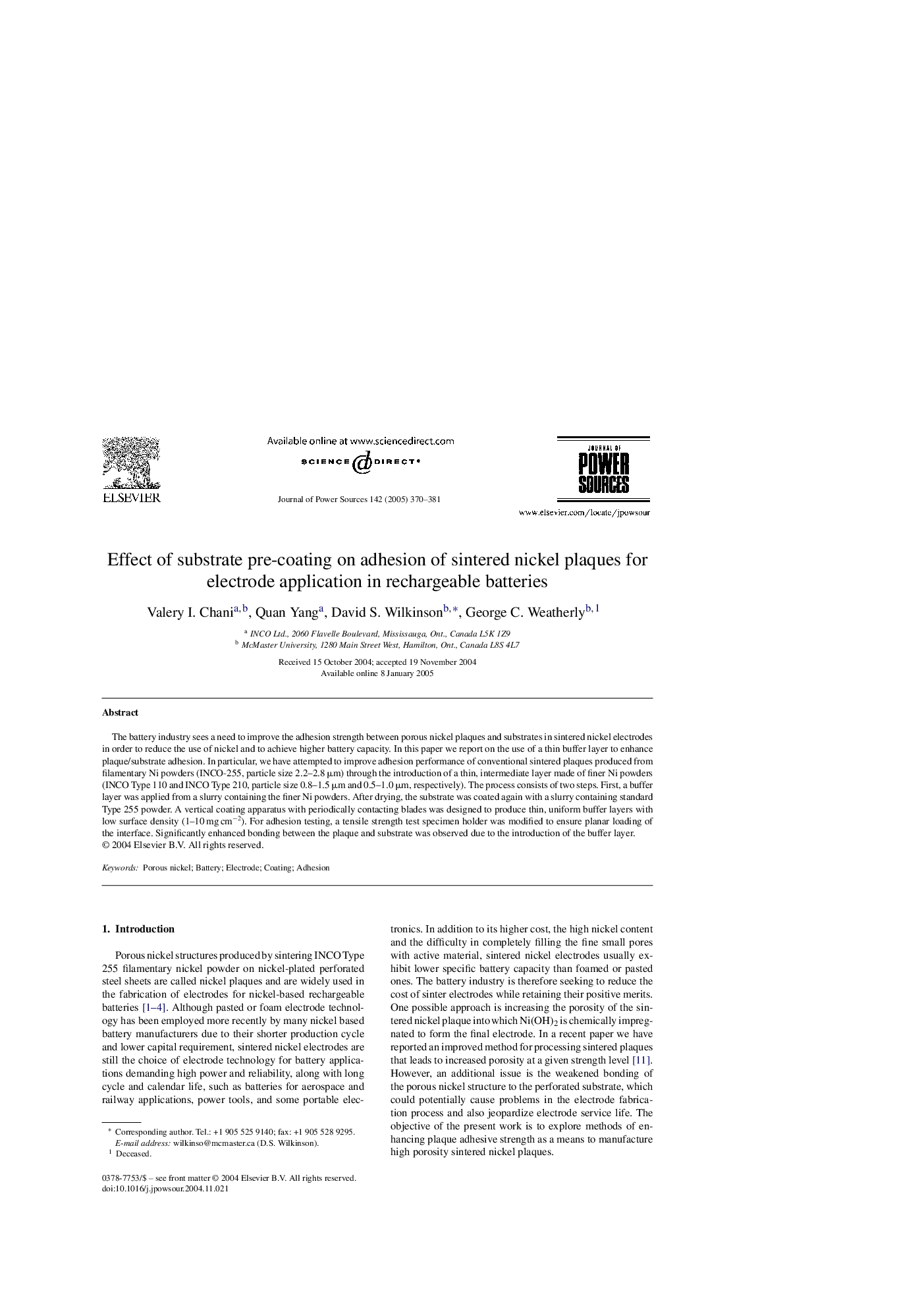| Article ID | Journal | Published Year | Pages | File Type |
|---|---|---|---|---|
| 9760453 | Journal of Power Sources | 2005 | 12 Pages |
Abstract
The battery industry sees a need to improve the adhesion strength between porous nickel plaques and substrates in sintered nickel electrodes in order to reduce the use of nickel and to achieve higher battery capacity. In this paper we report on the use of a thin buffer layer to enhance plaque/substrate adhesion. In particular, we have attempted to improve adhesion performance of conventional sintered plaques produced from filamentary Ni powders (INCO-255, particle size 2.2-2.8 μm) through the introduction of a thin, intermediate layer made of finer Ni powders (INCO Type 110 and INCO Type 210, particle size 0.8-1.5 μm and 0.5-1.0 μm, respectively). The process consists of two steps. First, a buffer layer was applied from a slurry containing the finer Ni powders. After drying, the substrate was coated again with a slurry containing standard Type 255 powder. A vertical coating apparatus with periodically contacting blades was designed to produce thin, uniform buffer layers with low surface density (1-10 mg cmâ2). For adhesion testing, a tensile strength test specimen holder was modified to ensure planar loading of the interface. Significantly enhanced bonding between the plaque and substrate was observed due to the introduction of the buffer layer.
Related Topics
Physical Sciences and Engineering
Chemistry
Electrochemistry
Authors
Valery I. Chani, Quan Yang, David S. Wilkinson, George C. Weatherly,
